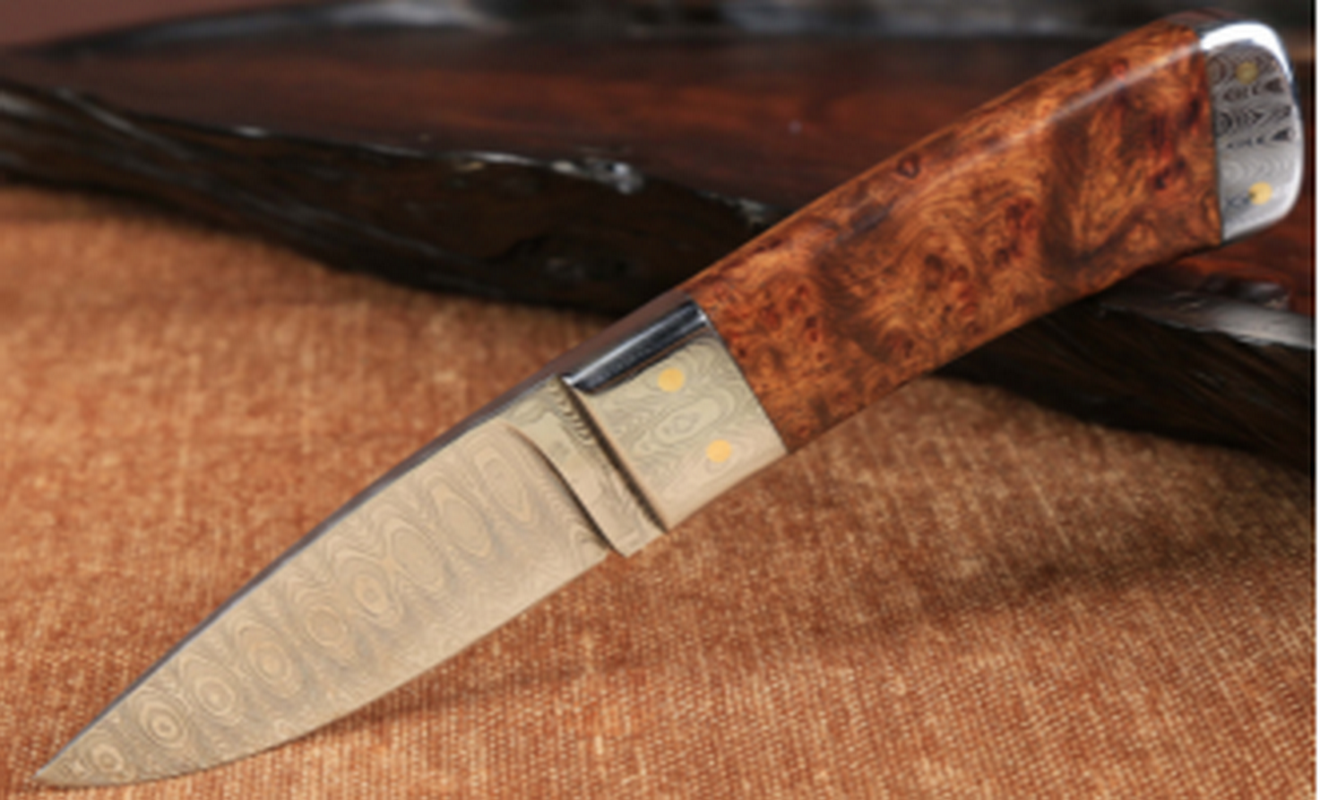![]() Windy
Windy
 WeChat
WeChat
 WhatsApp
WhatsApp
Click:542 seen

Have You Seen Blades Of Different Shapes?
There are different types of knives for different purposes, and manufacturers have different styles, so the geometry of the blades varies.
Standard Blade
Because the point of the blade is straight, and the curve is very simple, so it is called standard blade, also known as straight back type. On a standard blade, the tip neither drops nor rises, but is perfectly straight with the back of the blade. The cutting power is the strength of this blade.
Single Spear Blade
The blade is symmetrical from top to bottom and is shaped like a dagger. The main difference between a spear point and a dagger is that a spear point is a single blade, whereas a dagger is a double blade.
Pinch Blade
Clip-on blades are very popular, ranging from utility knives to hunting knives. This knife shape is similar to the drop point shape, but the blade is partially cut near the tip, creating a curved point. The tip is lowered to allow better control of the tool, while preserving a suitable belly for cutting. Pinch point is one of the most classic knife types, and some knives are designed to change the pinch point.
Drop Point Blade
This is a very popular blade shape, used in many modern tactical folding knives, and a favorite of many custom knife makers. The drop point shape is where the ridge on the back of the blade bends slightly downward to meet the tip, where the tip is still significantly higher than the midpoint of the blade, unlike the spear point which is located at the midpoint.
Postapical Blade
A back pointed blade is the position of the blade above the knife ridge and usually produces the edge of a larger abdomen. This type of knife is often found on skilling and hunting knives, and fillet knives are also common examples. Knives of this type are usually used for cutting or cutting rather than piercing.
Dagger
The dagger blade is a perfectly symmetrical shape, like the tip of a spear, but slightly more pointed, with a smaller belly and a perfectly symmetrical grind. But because it's illegal to use a double-bladed knife in some places, many daggers have no sharpened top edge, no secondary bevel. Daggers also usually have perfectly symmetrical handles. Daggers are less common than other blade types and are usually used only as decorative knives for display purposes and a few tactical knives.
Some modern dagger designs do not have symmetrical grinding, but can still be classified as daggers due to the thin pointed blade, symmetrical blade shape, and symmetrical handle, but are simply examples of modern modified versions.
Japanese Tanto
The Tanto blade is a bit of a misnomer because it's not a blade shape, it's a knife. The Japanese Tanto is a small knife, usually with a blade between 6 and 12 inches in length, and comes in a variety of blade shapes, including some double-edged designs. Unlike the American Tanto, the Japanese Tanto does not have sharp edges.
American Tanto
The American Tanto is a newer form of blade popularized by the American cutter company Cold Steel in the 1980s. The tip shape of the American Tanto differs greatly from the traditional Japanese Tanto blade in that the blade consists of two separate edges and has a angular tip that forms an auxiliary point, which is the signature look of the American Tanto.
The American Tanto extends in many different shapes and forms, with the back of the blade sometimes straight and sometimes curvy downward like a drop point.
Reverse Tanto
A reverse Tanto is basically an inverted American Tanto blade, so the pointy side is at the top and looks like a very sharply angled drop spot. In general, there are no set rules for reverse Tanto, and many are modified designs.
Counterbending Blade
Inverting is not a leaf shape, but a leaf feature. Any type of blade, such as drop point, pinch point, etc., can have a backbend, so backbend is not an independent blade shape, but a blade feature.
The backbend is basically the blade in an "S" shape, which usually forms a large belly and helps the tool cut function. Larger knives can be used with the weight of the blade to give better cutting function by reversing, such as the Nepal machete and some reversing machetes.
Olecranon Blade
The olecranon blade is a hook blade with a concave blade. It is suitable for cutting textiles, ropes and even bushes. The shape of the blade prevents the rope from sliding. But olecranon blades also have many disadvantages. The only practical use of the olecranon blade is for pull-cutting, as the blade shape prevents push cutting and slicing.
Beak Blade
Beak blade, much like the upside-down standard blade shape. This type of blade has a perfectly straight cutting edge, and the ridge of the blade descends gradually until the tip forms a point. This blade shape is great for opening boxes and envelopes, but not for preparing food or peeling.
Sheep's Hoof Blade
A sheep's hoof blade with a rounded tip and a flat edge is commonly found in lifesaving knives. Sheep hoof blades are sometimes confused with beak blades, but the latter have a more pronounced tip. There are now some improved hoof blades with curved blades and distinct obtuse hoof tips.
Santoku Blade
Santokus are knives commonly used by Japanese chefs in the kitchen. Derived from the French chef's knife, Santokus was modified to be more suitable for Japanese cuisine. Santoku, which is typically about an inch shorter than the equivalent chef's knife and has a tip similar to a lamb's hoof blade with a slightly curved blade, is also gaining popularity in Western kitchens.
Kiridashi Blade
Kiridashi is a Japanese-style blade with a chiseled edge on the sharpened edge, designed for woodworking and carving. In recent years, the tactical knife community has begun to adopt this style of blade for concealed carry and self-defense.
Spanto Blade
A combination of the spear point and the Tanto form Spanto, a popular blade shape invented by Rick Hinderer. The Spanto has a blade like a Tanto knife, but the overall shape is like the tip of a spear. With a typical curve, spear-pointed belly, thicker overall blade, and Tanto pointe features, this makes it a very versatile blade.
Nightmare Grinding Blade
The Nighmare Grind is not just a grind, but a blade feature. A deep hollow section is cut from the middle of the blade to produce a hook or counterbend depending on how it is grinding.
We specialize in OEM & ODM knives. Including Folding knives,Outdoor hunting knives, Survival knives, pocket knife gift, Pocket knives, Flying knives, pocket knife gift, Machetes, Multi-functional knives and Related outdoor accessories products.
We also have a professional design team, can design changes for you, to create more new styles.
Can be customized according to your request any style of knife.
We are the original manufacturer of pocke knife. Our factory has all the above production conditions.
Please feel free to contact us for cooperation, thank you!
